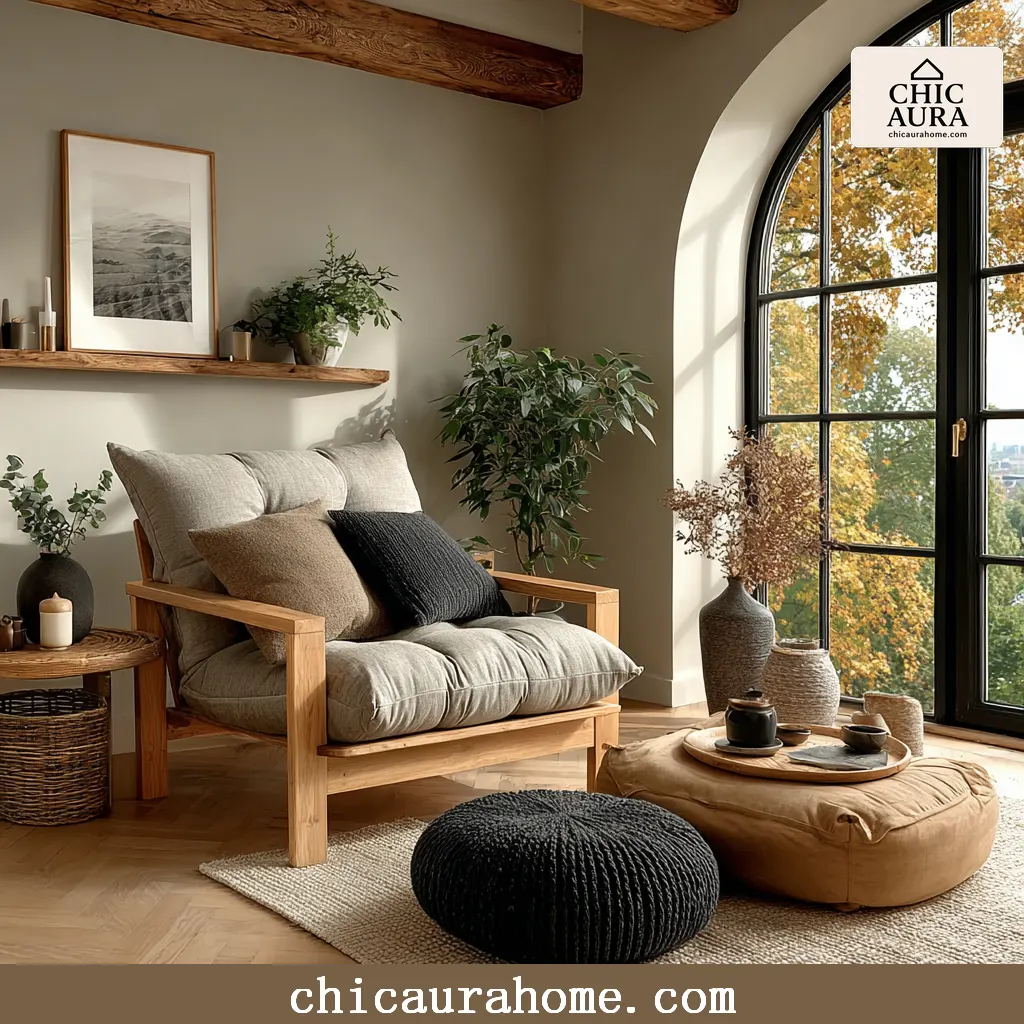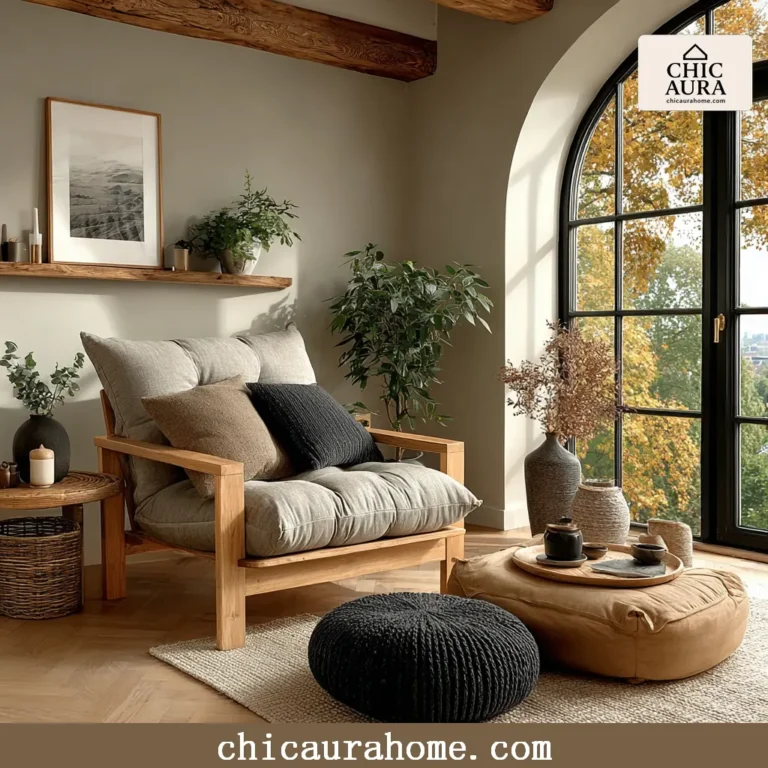
The Japandi living room is the epitome of minimalist elegance, blending Japanese and Scandinavian design principles to create a space that’s both serene and stylish. This design trend has taken the world by storm, offering a perfect balance between functionality and aesthetic appeal. The importance of creating a Japandi living room lies in its ability to foster tranquility and simplicity, making it a sanctuary from the chaos of everyday life. With its neutral color palettes, natural materials, and clean lines, the Japandi style is not just about looks; it’s about creating a mindful environment that promotes well-being. Whether you’re looking to completely revamp your space or just incorporate a few Japandi elements, this guide will provide you with the inspiration and practical tips you need to achieve the perfect balance between minimalism and warmth.
The Essence of Japandi Living Room Design
Japandi design is a harmonious blend of Japanese minimalism and Scandinavian coziness, creating living rooms that are both functional and inviting. The key to mastering this style lies in the balance between simplicity and warmth. Natural materials like wood and stone play a central role, alongside a muted color palette that evokes a sense of calm. Furniture in a Japandi living room is characterized by clean lines and understated elegance, with every piece serving a purpose. Lighting is another crucial element, with an emphasis on natural light and soft, diffused artificial lighting to enhance the room’s tranquil ambiance. Incorporating plants can also add a touch of vitality and freshness to the space, bridging the gap between indoor and outdoor living.
12 Key Elements for a Perfect Japandi Living Room
Creating the perfect Japandi living room involves focusing on 12 key elements that embody the essence of this design philosophy. These include a neutral color scheme, natural materials, minimalist furniture, and strategic lighting. Textiles play a significant role as well, with linen, cotton, and wool adding texture and warmth. The concept of ‘wabi-sabi,’ which finds beauty in imperfection, is also integral to Japandi design, encouraging a more relaxed and personal approach to decor. Storage solutions should be both practical and aesthetically pleasing, helping to maintain the room’s clutter-free appearance. Lastly, the inclusion of handmade or artisanal items can add character and a sense of uniqueness to your Japandi living room, making it truly your own.
How to Incorporate Japandi Style into Your Existing Living Room
Transitioning your existing living room into a Japandi-inspired space doesn’t have to be overwhelming. Start by decluttering and simplifying your decor, focusing on quality over quantity. Introduce natural materials and textures through furniture, rugs, and accessories. Swap out bright, bold colors for a more subdued palette, and consider adding a few statement pieces that reflect the Japandi ethos. Lighting can be easily updated by choosing fixtures that offer a soft, warm glow. For those looking to make a more significant change, consider rethinking your layout to promote a sense of flow and openness. Remember, the goal is to create a space that feels both minimalist and cozy, so don’t be afraid to experiment until you find the perfect balance.
Conclusion
The Japandi living room offers a unique blend of minimalism and warmth, creating a space that’s both beautiful and functional. By focusing on natural materials, a neutral color palette, and thoughtful decor, you can transform your living area into a serene retreat that reflects the best of Japanese and Scandinavian design. As we look to the future, the principles of Japandi design are likely to become even more relevant, as more people seek out ways to create peaceful, sustainable, and stylish living environments. Whether you’re starting from scratch or looking to incorporate Japandi elements into your existing decor, the key is to embrace simplicity, quality, and a deep connection to the natural world. For more inspiration on creating your perfect Japandi living room, visit https://chicaurahome.com/ for a wealth of ideas and resources.
Frequently Asked Questions
Q: What is the main difference between Japandi and Scandinavian design?
While both styles emphasize simplicity and functionality, Japandi design incorporates more natural and organic elements inspired by Japanese aesthetics, such as the use of natural materials and a more muted color palette, to create a sense of tranquility and harmony.
Q: Can I incorporate color into a Japandi living room?
Yes, while Japandi design favors a neutral color scheme, subtle accents in earthy tones or soft pastels can be used to add warmth and personality without disrupting the overall sense of calm.
Q: How important is lighting in a Japandi living room?
Lighting is crucial in Japandi design, as it helps to create the right ambiance. The focus is on natural light during the day and soft, warm artificial lighting in the evening to maintain a cozy and inviting atmosphere.

